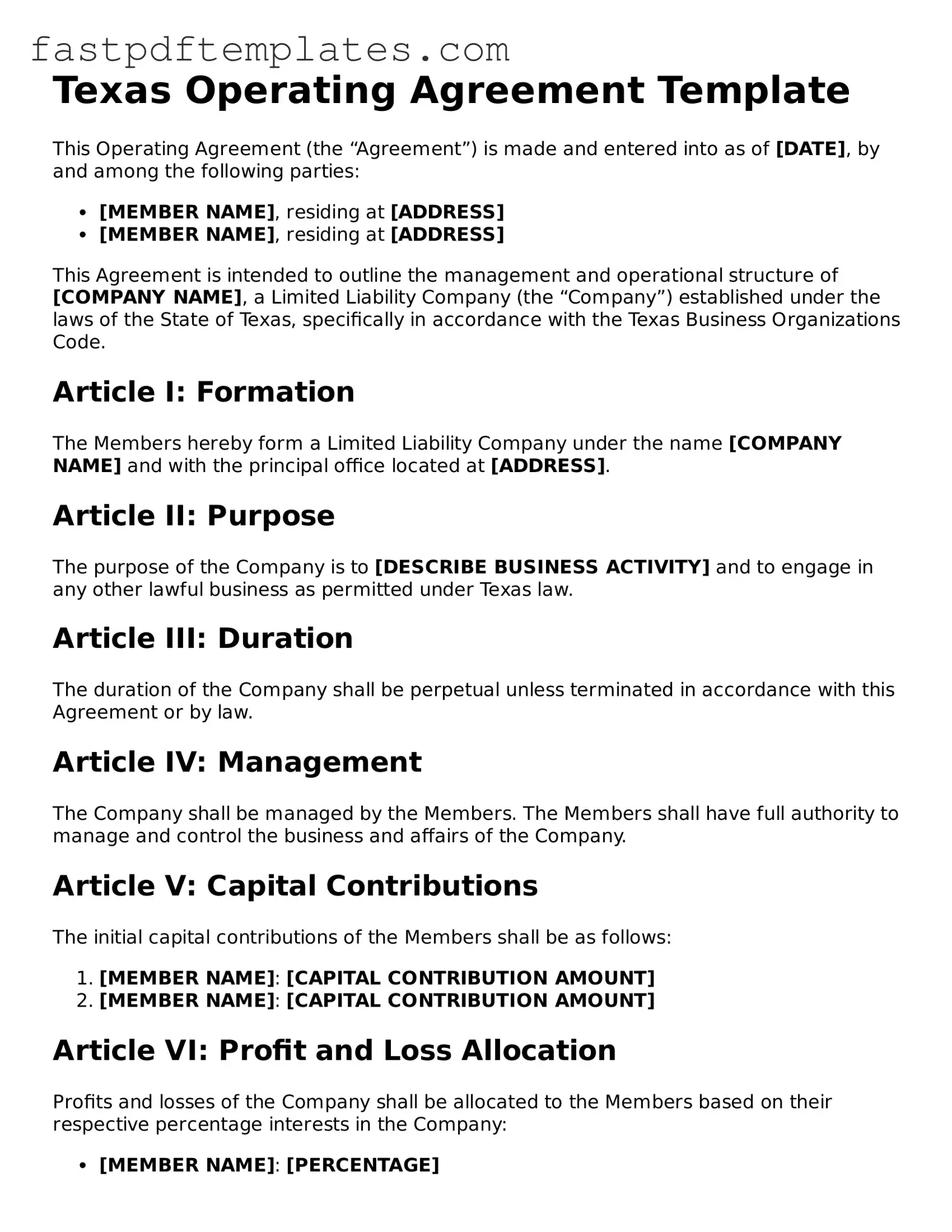Texas Operating Agreement Template
This Operating Agreement (the “Agreement”) is made and entered into as of [DATE], by and among the following parties:
- [MEMBER NAME], residing at [ADDRESS]
- [MEMBER NAME], residing at [ADDRESS]
This Agreement is intended to outline the management and operational structure of [COMPANY NAME], a Limited Liability Company (the “Company”) established under the laws of the State of Texas, specifically in accordance with the Texas Business Organizations Code.
Article I: Formation
The Members hereby form a Limited Liability Company under the name [COMPANY NAME] and with the principal office located at [ADDRESS].
Article II: Purpose
The purpose of the Company is to [DESCRIBE BUSINESS ACTIVITY] and to engage in any other lawful business as permitted under Texas law.
Article III: Duration
The duration of the Company shall be perpetual unless terminated in accordance with this Agreement or by law.
Article IV: Management
The Company shall be managed by the Members. The Members shall have full authority to manage and control the business and affairs of the Company.
Article V: Capital Contributions
The initial capital contributions of the Members shall be as follows:
- [MEMBER NAME]: [CAPITAL CONTRIBUTION AMOUNT]
- [MEMBER NAME]: [CAPITAL CONTRIBUTION AMOUNT]
Article VI: Profit and Loss Allocation
Profits and losses of the Company shall be allocated to the Members based on their respective percentage interests in the Company:
- [MEMBER NAME]: [PERCENTAGE]
- [MEMBER NAME]: [PERCENTAGE]
Article VII: Meetings
Meetings of the Members may be called by any Member. Each Member shall receive at least [NUMBER] days' notice of the meeting.
Article VIII: Amendments
This Agreement may be amended only by a written agreement signed by all Members.
IN WITNESS WHEREOF
The Members have caused this Agreement to be executed as of the date first above written.
_______________________________
[MEMBER NAME], Member
_______________________________
[MEMBER NAME], Member
